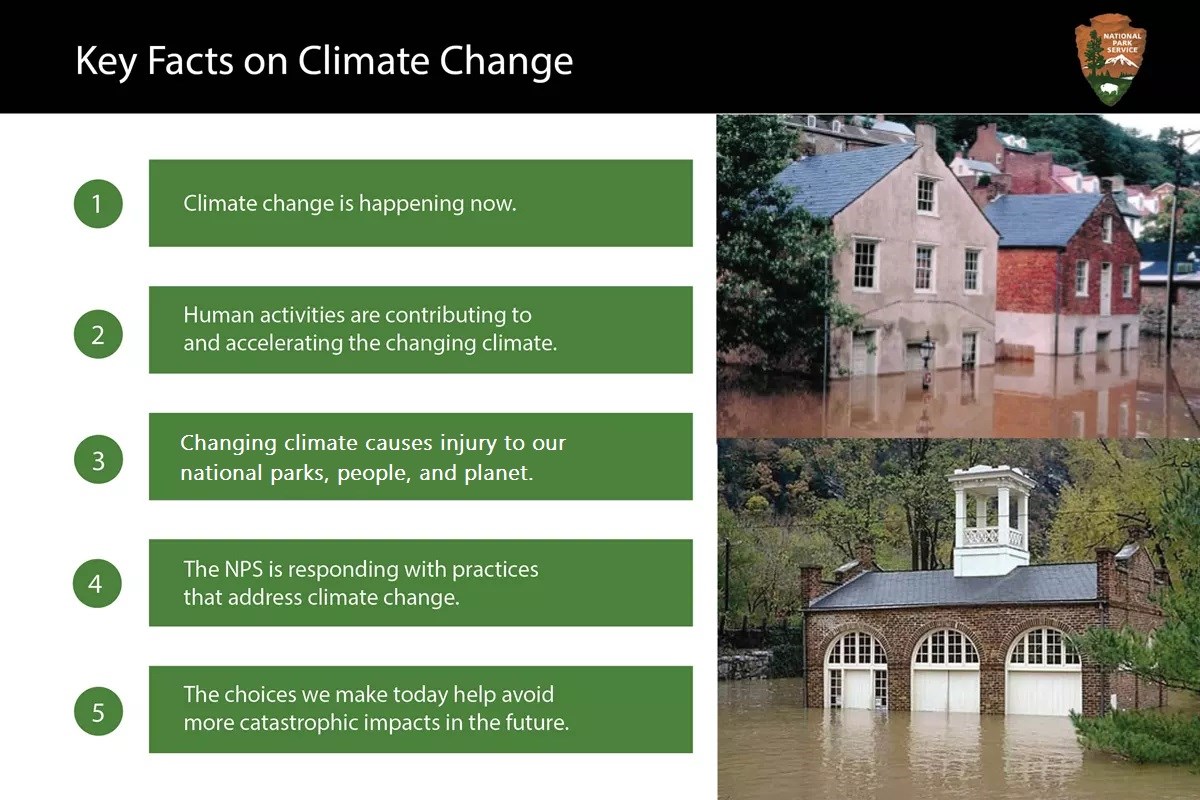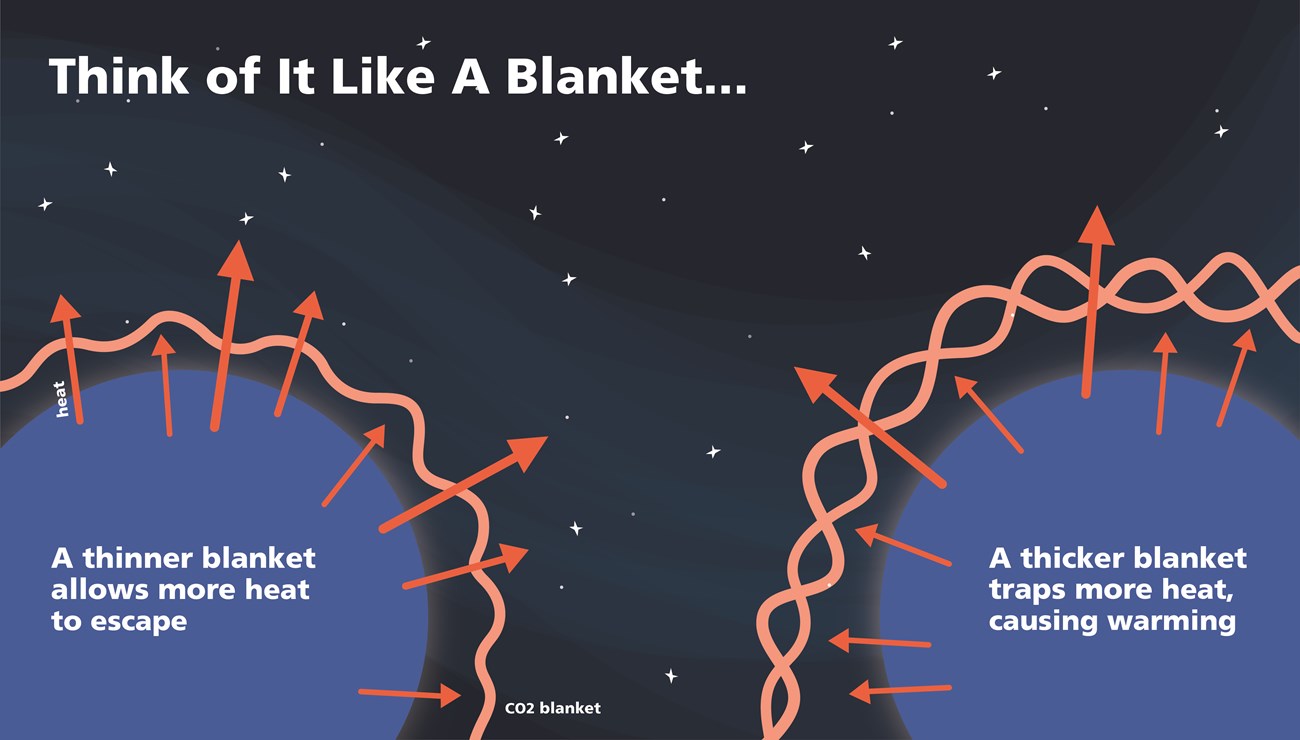
NPS Photos / Graphic by 4C

NPS / Graphic by Shannon Stanforth
The term “climate change” refers to how this excess heat has disrupted Earth’s natural climate system. According to the fifth synthesis report from the Intergovernmental Panel on Climate Change, 97% of climate scientists are in agreement that currently observed changes in Earth’s climate are due to human activities that burn fossil fuels, including transportation, electricity generation, and manufacturing.
Climate Change History
This concept of human influence on the climate through CO2 emissions was proposed over 100 years ago by Swedish chemist Svante Arrhenius. Arrhenius predicted that increased atmospheric CO2 in Earth’s atmosphere could significantly change the Earth’s temperature. He also proposed that human activities could lead to an increase in atmospheric CO2 and, thus, could increase planetary temperatures.

Graphic from NOAA
The Mauna Loa Observatory is still taking measurements today, making it the longest continuous record of atmospheric carbon dioxide in the world.
Climate Change Impacts
Anthropogenic disruption to Earth’s natural climate has a number of dangerous effects including: warming global temperatures, increased extreme heat waves, more frequent droughts and floods, more frequent wildfires, and more. These climate change impacts can be seen all throughout our national parks.Increased atmospheric carbon has increased temperatures. The Washington D.C. region has warmed by more than 2ºF in the last century, and all four seasons have become warmer since the 1940s. When temperatures rise, extreme heat days (days above 95°F ) become more frequent, and heat waves last longer. As a result, heat emergencies are projected to increase, as the number of days at 95°F or above will go from 18–20 days out of the current year to 40–75 days by 2080. This is a huge cause for concern for national parks and beyond, as species and people face grave health and safety risks.
The good news is that there are actions you can take to help fight against the effects of climate change. See how the National Park Service is taking actions against climate change and how visitors can help.

Graphic by Shannon Stanforth
Last updated: December 22, 2021
